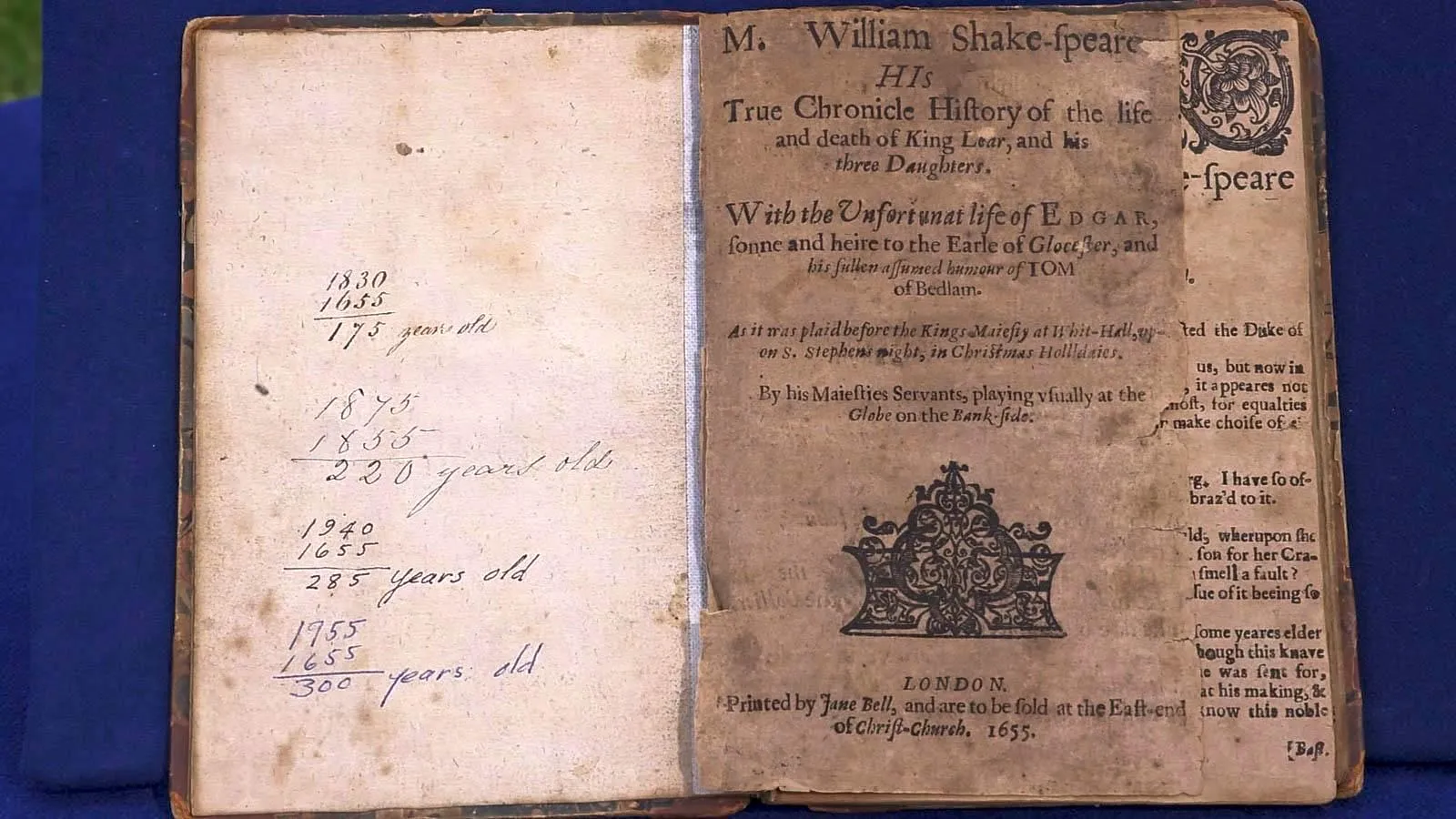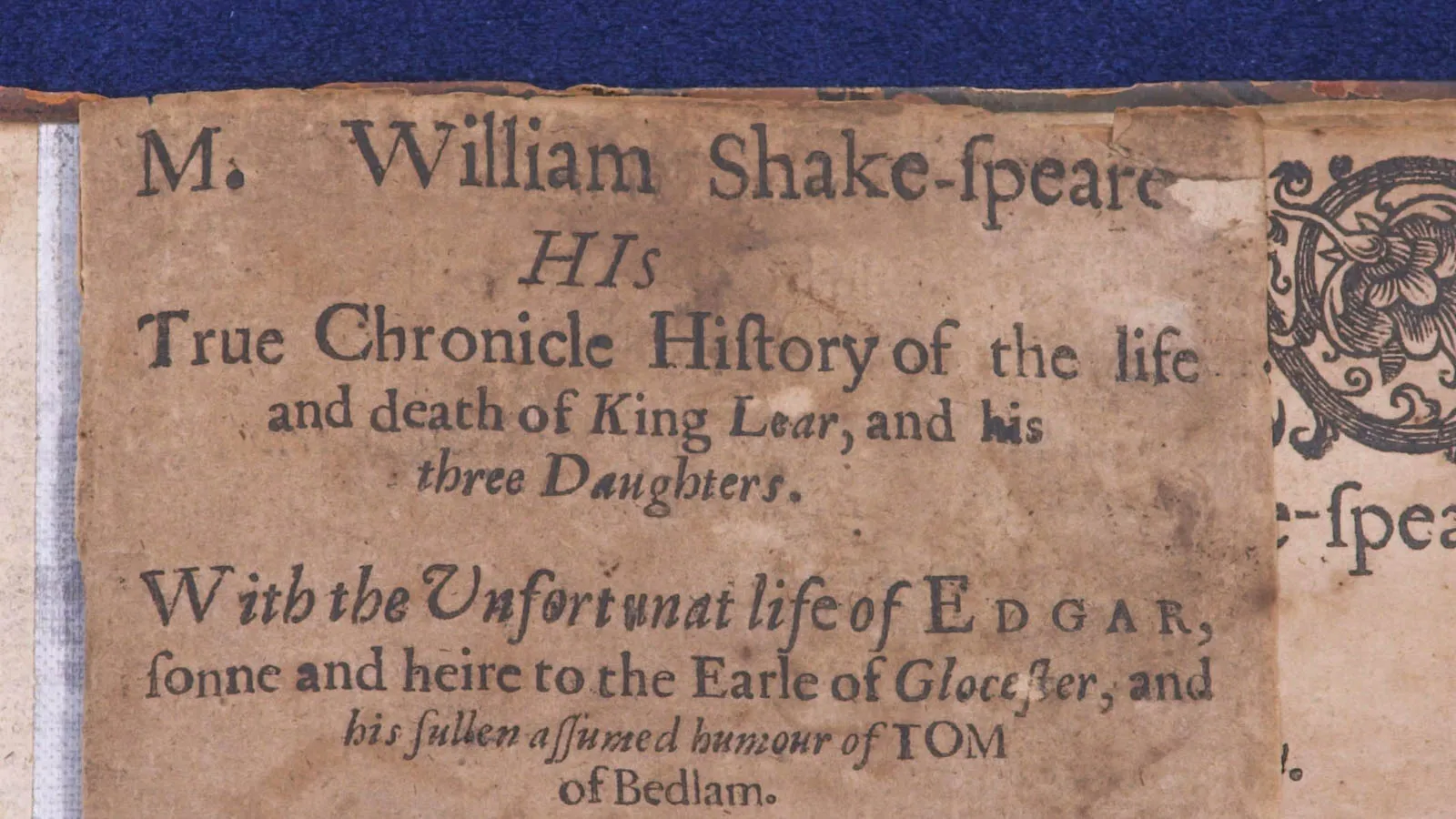Update: "King Lear" Sold at Auction
Books expert Devon Eastland appraised a 1655 Shakespeare 3rd quarto edition of *King Lear* during ROADSHOW’s 2022 stop in Shelburne. Learn about the book’s journey to the auction block following Eastland's $10,000 to $15,000!

Apr 24, 2023
It was a hot one for the July 2022 ROADSHOW stop in Shelburne, Vermont, and appraisers, guests, and crew had spent most of the morning sheltering in place from a threatening thunderstorm. Unpredictable days are a given for ROADSHOW and honestly the reason that we all turn up.
I remember one particular guest who arrived at the Books table late in the day. Mike wasn’t the first to arrive at the table bearing a mystery box, and as he began unpacking some unremarkable 17th-century books, I steeled myself to deliver the disappointing news. It’s very common for an old book — even one from the 1600s — to have almost no market value, based on about a million factors that would likely bore anyone except for the discriminating bibliomaniac. But it turned out that among all the others, Mike did have something that caught my eye.
I was happily surprised when I saw him pull a certain rather skinny, ratty-looking volume from the box. He explained that his grandfather had been a book collector, his father inherited the collection, as had Mike himself in turn, and for years the little group had humbly huddled together on his shelves without anyone taking notice of them. I said nothing revealing to Mike, as is the way on ANTIQUES ROADSHOW, and asked to pitch the story to a producer. Somehow, our guest had never noticed that he was the owner of a copy of William Shakespeare’s King Lear, in quarto format, printed by a female printer named Jane Bell, in London in 1655! Shakespeare had written King Lear — widely considered by scholars to be one of his greatest works of tragedy — in the first decade of the 1600s, and it was also during that time that the play was first performed and published.

During ROADSHOW'S July 2022 visit to Shelburne, Vermont, books expert Devon Eastland (left) appraised a 1655 3rd quarto edition of Shakespeare's "King Lear" for the book's owner, Mike (right).
The book stood out to me for a couple reasons. First, quarto-format books are rarer than the large folio format one might associate with a Shakespeare book, making them more appealing to collectors. The fact that Mike’s edition of King Lear was printed by a woman was an added bonus, given that the work of many female printers who worked across Europe and the Americas in the 16th and 17th centuries has been largely overlooked.
Some quick checking in the auction records showed no copies sold in decades. Bibliographical references backed up the book’s rarity. A conference with my colleagues on the Books table yielded a conservative auction estimate range of $10,000 to $15,000, and our producers agreed that the story would work, so we were ready to film!
Although commerce is not the goal of ROADSHOW, in our “real lives” outside the show, practically every appraiser is in the business of buying and selling the kinds of material we appraise. That said, we come to ROADSHOW in our PBS appraiser hats, respecting the non-profit boundaries of public media.

The title page reads "M. William Shake-speare HIS True Chronicle History of the life and death of King Lear, and his three Daughters."
Even so, our guests’ goals run the gamut, from those who would never sell their precious heirlooms, to those who are more than eager to part ways with their treasure. This guest was in the latter camp, and as I was happy to assist in selling his book at some future point, I delicately steered him to look for me online and reach out if he was interested in pursuing the auction option after we filmed our piece for ROADSHOW.
Mike emailed me the following week, and I provided Mike with a written version of the information I had shared when we met in Vermont, in addition to a primer on the auction experience. The only remaining hurdle was the book’s condition. The title page was frayed along the fore-edge, the binding was failing, and it had a frail feeling when handled, something easily observed from the ROADSHOW appraisal. The book needed repairs, and luckily, I’ve got a guy, as the saying goes — and that guy is me. I’ve been restoring early printed books since 1990 and take on very little work so that I can be open to important (sometimes spontaneous) projects just like this one.
Mike shipped the book to me at Swann Galleries, and I took it home. First I repaired the frail paper and then rebound the book. (The binding I replaced was not the book’s original binding anyway.) Short pamphlet-length works like plays and sermons were often collected into groups and bound in thick volumes in the 17th century, and this was undoubtedly the case for our King Lear. Somewhere along the line some tract volume was presumably taken apart and a discerning collector or dealer removed the Shakespeare. Alternatively, the play might never have been properly bound, and had been drifting around with a simple stab-sewn binding and plain wrappers. In any case, the present binding having no special characteristics, I removed it and created a new binding done in the same style. Next step: auction.
I cataloged the book for sale in early September of 2022 and we did our usual professional photography and advertising. I was not surprised when the little Lear garnered great interest with collectors, dealers, and institutions. Auctions can be boring, predictable, run-of-the-mill, only occasionally exciting. In a situation like ours, where nothing in any way comparable had been offered at auction since 1946, predicting an outcome can never really be more than a guess.
Sale day at Swann Galleries in New York was set for October 13, 2022. We hosted a brisk cadre of previewers in the week before the sale and fielded dozens of inquiries requiring the Lear. About halfway through the sale, lot 124 finally came up on the block. After a swift start, bidders pushed the hammer price up above the high estimate of $15,000, and then kept going past $20,000, past $30,000, past $40,000! Some prospective buyers dropped out along the way, some waited to jump in only after the price had soared. In the end, it came down to two determined phone bidders who pushed the bidding all the way up to $46,000, which was the final hammer price.
I knew that the book had deep interest from a wide variety of private collectors and dealers, but I was not prepared for an outcome on this order. I think that sometimes the bidders themselves aren’t sure how far they’ll go until the bidding actually starts. When two people compete head-to-head, and they have a deep commitment to the piece, the final price can be a surprise to everyone.
It's always an honor to handle a special book and see that it emerges from obscurity and danger into the hands of someone who truly values it. Meeting Mike and working with him was a pleasure — and now I feel like I’m in the Feedback Booth. Thanks ANTIQUES ROADSHOW!


